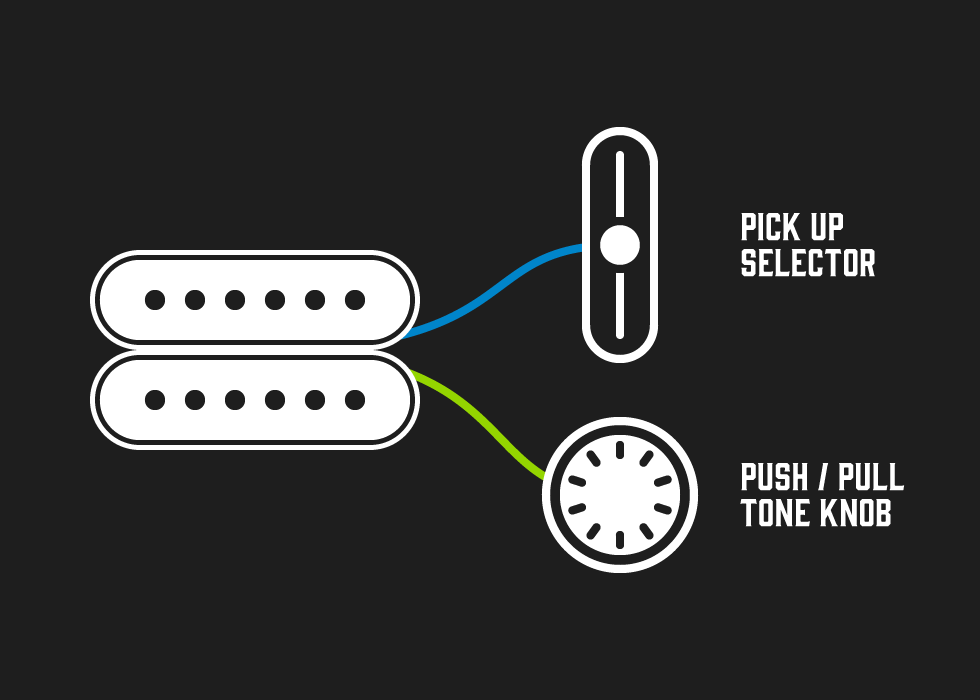Contrary to popular belief, coil split and coil tap are not just two ways of saying the same thing. There’s quite a big difference in how they function and the resulting sound. Both aim to alter your guitar’s tone and output, but the two electronics techniques go about accomplishing this in different ways.
Many players enjoy the ability to reduce their guitar’s pickup output. It broadens the available palette of tones, which is crucial in today’s diverse music landscape. This feature is most often found in guitars equipped with hot humbuckers or high-output single coils, adding another dimension to the styles you can explore with a single instrument.
It’s no longer a simple case of owning a single-coil guitar for softer genres and a humbucker guitar for heavier styles. Thanks to advancements in pickup design and switching technology, players can expect greater tonal versatility across all price ranges and guitar categories.

What is Coil Split?
Coil splitting applies exclusively to humbucker pickups. Humbuckers consist of two coils and magnets of opposite polarity to cancel hum and deliver a thick, powerful signal. To split a humbucker means to deactivate one coil, leaving a single coil active – producing a tone closer to what you’d expect from a standard Strat or Tele.
Why split the coils? Humbuckers and single coils offer dramatically different voicings. Humbuckers are fuller, warmer, and smoother. Single coils, by contrast, are brighter, more dynamic, and often more expressive – making them ideal for soulful leads or nuanced clean tones.
- Popular guitars like the PRS SE Custom 24, many Schecter Diamond Series models, and Charvel Pro-Mods offer built-in coil-splitting options, giving players quick access to both humbucker power and single-coil clarity.

What is Coil Tap?
Coil tapping functions differently. Rather than cutting out one of two coils, a coil tap reduces output by diverting the signal from a partial section of the pickup’s winding – often at the halfway point. This feature can be implemented in both humbucker and single-coil pickups.
The idea here is simple: the more wire windings a pickup has, the higher its output. Tapping a pickup shortens the wire path, reducing output and bringing the tone closer to that of vintage-style pickups. This can be perfect for classic rock, blues, and other lower-gain styles, adding a bit of sparkle and smoothing out the mids.
That said, a coil-tapped humbucker won’t sound identical to a single coil. The effect is more like lowering the gain or turning off a boost pedal. It’s a subtler change than coil splitting and not quite as versatile.
- You’ll find coil tap technology featured in some Gibson models, including the Les Paul Studio and Les Paul Modern, allowing players to switch between powerful modern tones and the more subdued, classic PAF-inspired character.
What’s Better: Coil Split or Coil Tap?
It depends on what you want from your tone. Gibson often leans toward coil tap to deliver a vintage character from modern high-output pickups. This setup allows players to access both classic and modern voicings in one guitar.
Coil splitting is more commonly found on guitars with dual humbuckers. Brands like PRS, Charvel, and Schecter have adopted coil split switches and push-pull pots widely across their lineups, especially in modern performance guitars where tonal flexibility is key.
In the end, there’s no definitive answer. Try both and see what suits your style best – do you prefer coil tap’s smoother, vintage-voiced reduction or coil split’s ability to mimic authentic single-coil sounds from your humbuckers?
If you enjoyed this read, check out more of our Labs articles for gear tips, tone guides, and guitar tech insights.



Responses & Questions